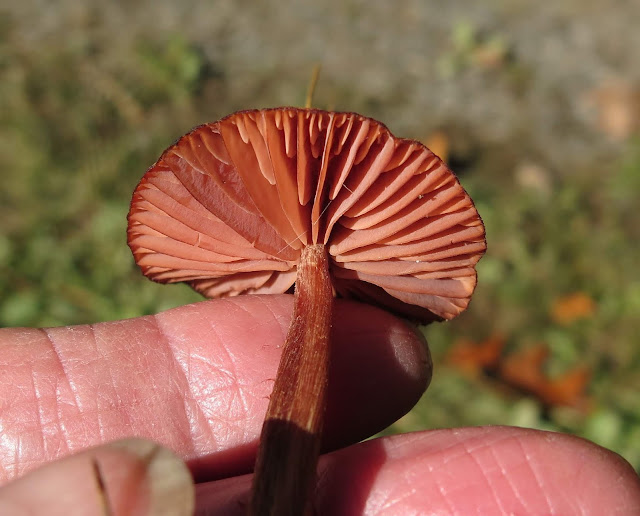While walking with my Thursday Naturalist friends in Thacher Park this past frosty-cold Thursday morning, I saw this chrome-yellow mushroom along a wooded trail. When I picked it up to examine it, I was amazed to find these blood-red gills. What a beauty! I had never seen a mushroom quite like it.
I have since discovered its name to be the Red-gilled Cort (Cortinarius semisanguineus), thanks to some expert members of a Facebook site I belong to dedicated to Lichens, Mosses, Ferns, and Fungi. Their ID led me to my Audubon mushroom guide, where I also learned that the remnants of a yellow cobwebby veil were another distinguishing feature of this species.
Isn't it wonderful how the internet helps expand our knowledge?
These next two photos are of another mushroom I saw on this same walk. How the heck did those pine needles get stuck in the middle of this mushroom's cap? Sometimes I see grass or twigs growing right through the flesh of a mushroom, and I always wonder how that happens. My best guess is that the fungal tissue forms around the piercing object, rather than the object piercing the already-formed fungal tissue. So far, all my Google searches have turned up no information about this. Guess I will post these photos on that Lichens, Mosses, Ferns, and Fungi site, and see if anyone knows the answer to this.
Perhaps my friends also will tell me the species of this mushroom (the bottom side of the pine-pierced mushroom pictured above). I would think such a variety of sizes of its coral-colored free gills would be a distinguishing feature. If I ever get an answer, I will come back to add an update.



1 comment:
Often mushrooms or fungus conks are pierced by twigs, needles or the stems of other plants. Like you, I've always assumed that the fungus grew around the object but do not know for certain.
Post a Comment